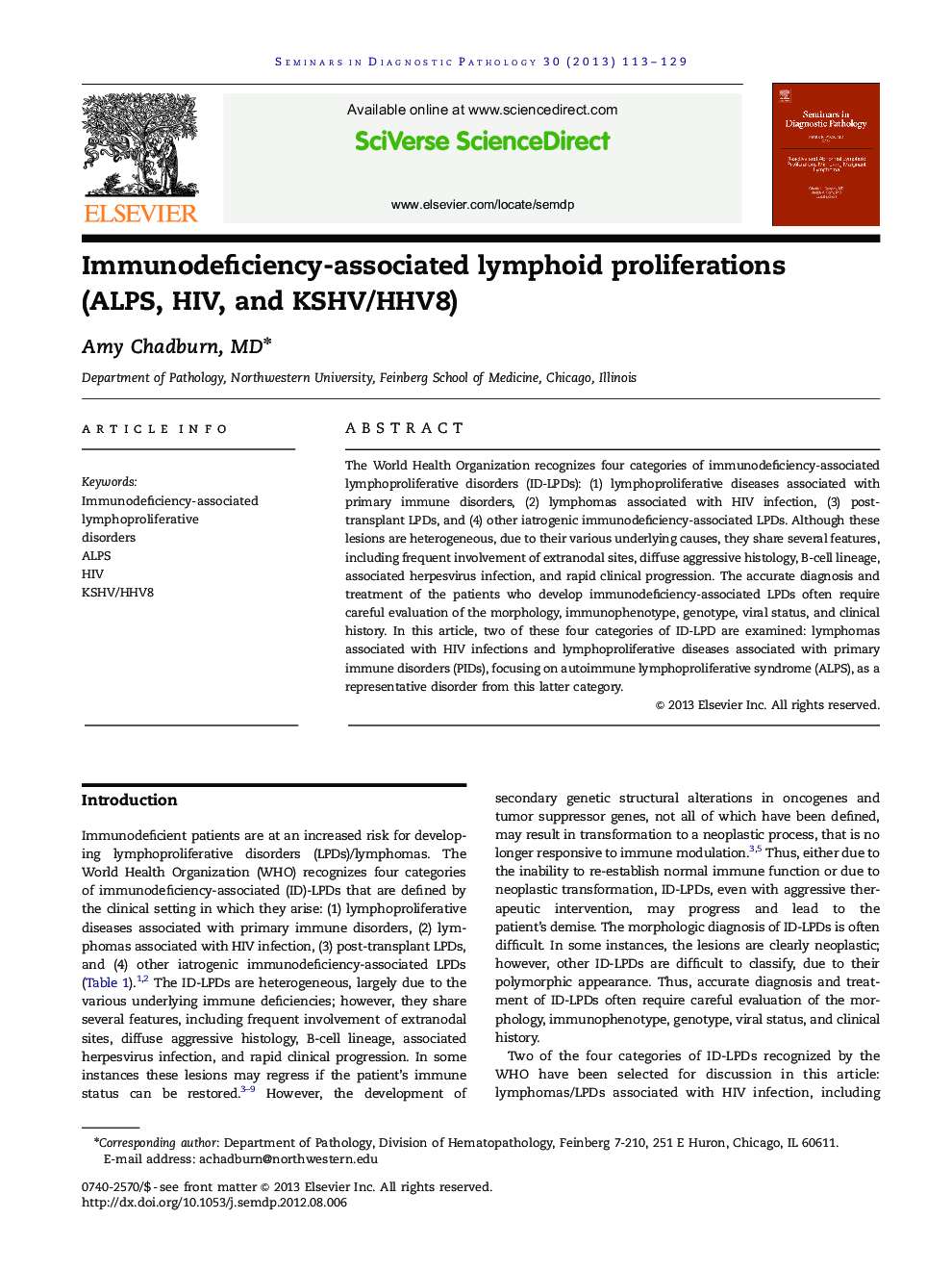| کد مقاله | کد نشریه | سال انتشار | مقاله انگلیسی | نسخه تمام متن |
|---|---|---|---|---|
| 4138509 | 1272152 | 2013 | 17 صفحه PDF | دانلود رایگان |

The World Health Organization recognizes four categories of immunodeficiency-associated lymphoproliferative disorders (ID-LPDs): (1) lymphoproliferative diseases associated with primary immune disorders, (2) lymphomas associated with HIV infection, (3) post-transplant LPDs, and (4) other iatrogenic immunodeficiency-associated LPDs. Although these lesions are heterogeneous, due to their various underlying causes, they share several features, including frequent involvement of extranodal sites, diffuse aggressive histology, B-cell lineage, associated herpesvirus infection, and rapid clinical progression. The accurate diagnosis and treatment of the patients who develop immunodeficiency-associated LPDs often require careful evaluation of the morphology, immunophenotype, genotype, viral status, and clinical history. In this article, two of these four categories of ID-LPD are examined: lymphomas associated with HIV infections and lymphoproliferative diseases associated with primary immune disorders (PIDs), focusing on autoimmune lymphoproliferative syndrome (ALPS), as a representative disorder from this latter category.
Journal: Seminars in Diagnostic Pathology - Volume 30, Issue 2, May 2013, Pages 113–129